In Jan. 9th, School of Aeronautics, Astronautics and Mechanics Engineering of Tongji University held a special final exam in the form of an exhibition: 21 model aircrafts designed and made by more than 50 students from the Aeronautics Major were on display. The students took oral exams in turn to explain the processes of structural design, production, strength analysis and testing of their aircrafts. Different from the traditional written exam, this final exam was more like an aircraft party, as designers proudly presented their works.
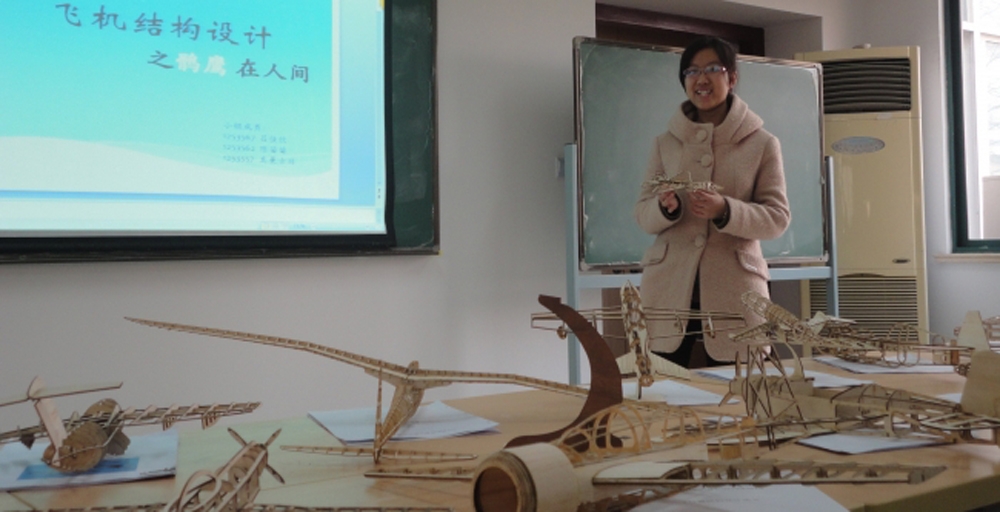
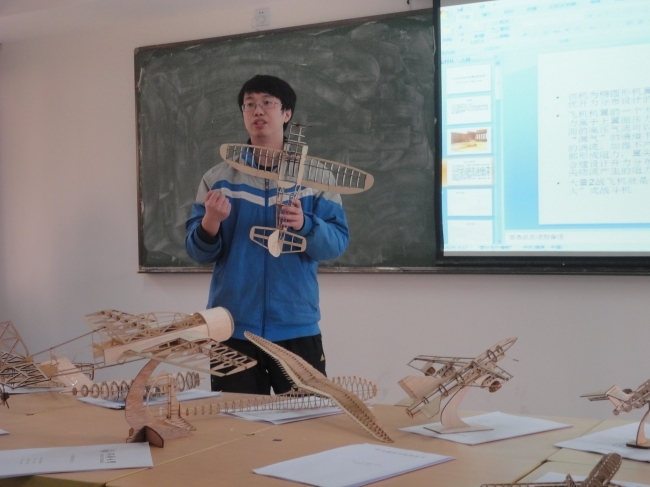
More than 20 small model aircrafts of various styles were brought to the exhibition. There were new concept double seaplane, seagull-shaped bionic folding wing airplane, ARJ 21, An-26, Boeing 787, Airbus A380, famous fighter plane of the time such as B2, F-31, Mirage 2000, and old fighter airplane in World War II P51 Mustang and Jacques 54. All the model aircrafts were made of balsa wood with the techniques of laser engraving and manual splice. None of them were more than 150g. The longest wingspan was 50cm and the shortest 15cm.
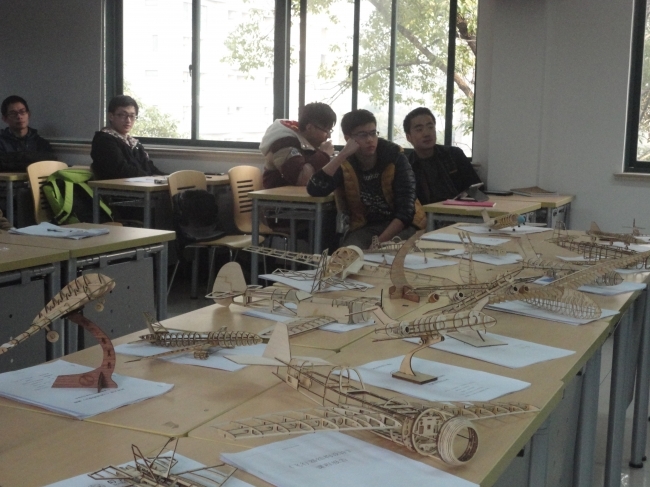
Since it was the assignment of aircraft design course, every model aircraft was asked to be accurately detailed. Students designed the shapes of airplanes by CAD software, and then calculated the sizes of the structure of frames, stringers, spars, ribs, and vertical walls by parts. They formed CAD formworks and made components and parts of the models out of balsa wood by laser engraving. Finally, the whole models were spliced by superglue.
In order to justify the structural design, students adopted the methods of establishing finite element model or of structural mechanics to calculate the stress of key parts of the aircrafts, and to check the strength and deformation of the structure. Furthermore, they used laser sensor for displacement measurement to test the strength of their aircrafts under aerodynamic load simulation, and compared the results with the theoretically calculated values.
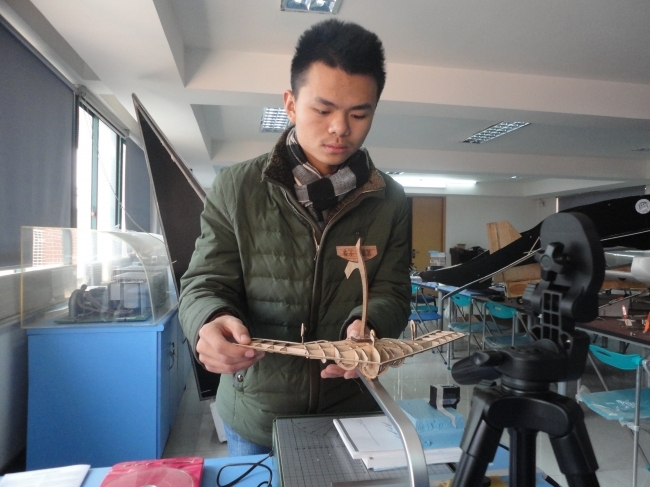
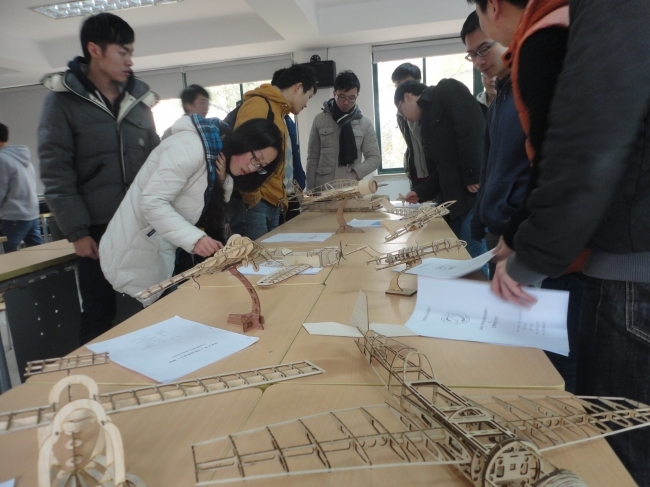
Prof. SHEN Haijun, teacher of the course, said, “We are trying to combine the research and development of small aircrafts with theoretical teaching to improve students' capacity in applications, operation, skills as well as teamwork. Up to now, the students have made nearly 100 unmanned aircrafts, micro-aircrafts and model aircrafts.”
“Since our freshman year, every student in this course has made model aircrafts for two or three times. I made and tested a model of ARJ21-700 in proportion of 1:100 this time”. Aikranmu, A third year student from Xinjiang Province showed his works on display to visitors and said, “This way of teaching by making designs and production of model aircrafts with our own hands avoids making empty talk and improves my comprehensive ability, which will certainly benefit my future career and my life.”
Translated by May Language Studio based upon
http://news.tongji.edu.cn/classid-7-newsid-45859-t-show.html